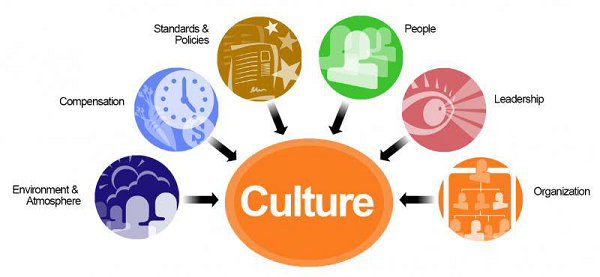Файл: Учебное пособие по профессиональному иностранному языку для студентов 3 курса.docx
ВУЗ: Не указан
Категория: Не указан
Дисциплина: Не указана
Добавлен: 02.05.2024
Просмотров: 96
Скачиваний: 0
ВНИМАНИЕ! Если данный файл нарушает Ваши авторские права, то обязательно сообщите нам.
CASE STUDY 3:
Task 1. Complete the table below with the correct job descriptions.
| Functional structure | Matrix structure |
| | |
Job descriptions:
a) project teams;
b) a high ranking executive at the top;
c) no consistent organization structure;
d) permanent work teams;
e) HR manager, marketing, accounting and engineering department heads directly report to the top executive;
f) matches skills with project;
g) works best for temporary projects;
Task 2. Read the situation below and answer the following questions.
You are the owner of a business that sells uniforms and provides embroidery services for high school, university, and recreational sports teams in your area. You have managers in the following departments: High School Sales, University Sales, Recreational Sales, and Accounting. The High School and University Sales have one full-time sales associate and two part-time associates as well as a delivery person. The Recreational Sales department has both one full-time associate and one part-time associate. The Accounting department has two full-time employees that report to the manager.
(Adapted from https://www.chegg.com//)
Discussion Questions:
1. What does the organizational chart look like for your business? (Create an organizational chart).
2. What organizational structure is your business?
3. If sales are declining in one of the sales departments, what will be your recommendation to possibly restructure to improve sales?
4. If sales are increasing, make a recommendation on how to restructure to handle the increased business.
5. Is the current structure considered ‘tall’ (more centralized) or ‘flat’ (more decentralized)?
UNIT 4
EMPLOYMENT CULTURE AND CULTURAL DIVERSITY
LEAD-IN
Task 1. Discuss the following questions.
1. What is culture?
2. What is cultural management?
3. What is organizational culture and why is it important?
READING
Task 1. Discuss the following question before you read the text.
How far do you agree with this picture below?

Text A.
Task 2.Read the text bellow and then discuss the following questions.
-
What is a workplace culture? -
Why is it important to build a positive workplace culture? -
How can organizations create a positive workplace culture? -
How do you make employees feel important?
HOW TO CREATE A POSITIVE WORKPLACE CULTURE
Culture is the environment that surrounds us all the time. A workplace culture is the shared values, belief systems, attitudes and the set of assumptions that people share in a workplace. This is shaped by individual upbringing, social and cultural context. In a workplace, however, the leadership and the strategic organizational directions and management influence the workplace culture to a huge extent. A positive workplace culture improves teamwork, raises the morale, increases productivity and efficiency, and enhances retention of the workforce. Job satisfaction, collaboration, and work performance are all enhanced. And, most importantly, a positive workplace environment reduces stress in employees.
It is important to have a set of clear organizational core values that are communicated effectively and discussed with the employees so that they feel part of it. It is crucial that demonstrable actions are taken regularly so that the employees feel an individual and personal responsibility towards these values. This will ensure that they can evaluate their own attitudes towards these positive core values, and take pride in them. Positive attitudes and positive actions make for a positive workplace culture.
Leadership and management style that encourages teamwork, open and honest communication is vital to creating a positive feeling in the workplace. Open and honest communication also means that regular audits are taken to evaluate how people are interacting with each other, feedback is welcomed and taken on board, and opportunities for social interaction are enabled. These can include coffee mornings, team getaways and family weekends. This gives an opportunity for team members to nurture and foster connections outside of work.
A positive workplace is one where all the employees are valued, supported and nurtured irrespective of gender, sexual orientation or color. All employees should have equal opportunities to progress and equal access to all the perks and rewards on offer. An inclusive workplace is one that values individual differences in the workforce and makes them feel welcome and accepted. Include signage that supports inclusivity, is clear and positive. Language can create confusion and miscommunication. Careful use of language that reinforces the gender-conscious and inclusive ethos, such as that emphasizing the function of space rather than the gender identity of users is important.
(Adapted from https://www.forbes.)
Task 3. Read the text A and choose the most appropriate letter (a, b, c, or d) to answer questions (1-6).
1. Which of these is not mentioned as the influence on the workplace culture?
a) leadership
b) staffing
c) management
d) strategic organizational directions
2. Which of these is not mentioned as the effect of a positive workplace culture?
a) improves teamwork
b) increases productivity
c) enhances skills development
d) raises the moral
3. It is important to take demonstrable actions regularly because………
a) employees feel an individual and personal responsibility towards core values.
b) employees demonstrate leadership activities
c) employees prevent conflicts
d) employees receive training tend
4. Which of these is vital to create a positive feeling in the workplace?
a) leadership
b) open and honest communication
c) management style
d) career success
5. Which of these actions does not give an opportunity for team members to nurture and foster connections outside of work?
a) coffee morning
b) family weekends
c) competition
d) team gateways
6. Which of these is not important in an inclusive workplace?
a) to value individual differences in the workplace
b) to make feel employees welcome
c) to make feel employees accepted
d) to show that employees gender identity
Task 4. Match the sentence beginnings (1-7) with the correct endings (a-g) to make a short summary of the Text A. Read the Text A again if necessary.
1. A workplace culture is the shared values, belief systems, attitudes and the set of assumptions that …………………………………
2. A positive workplace culture improves teamwork, raises the morale, increases productivity and efficiency, and enhances …………………………………
3. It is important to have a set of clear organizational core values that are communicated effectively and discussed with the employees so that …………..
4. Positive attitudes and positive actions make for ……………………………….
5. Leadership and management style that encourages teamwork, open and honest communication is vital to creating ……………………………………….
6. A positive workplace is one where all the employees are valued, supported and nurtured irrespective of …………………………………………
7. Careful use of language that reinforces the gender-conscious and inclusive ethos, such as that emphasizing the function of space rather than ……………..
-
gender, sexual orientation or color. -
the gender identity of users is important. -
people share in a workplace. -
a positive feeling in the workplace. -
a positive workplace culture. -
they feel part of it. -
retention of the workforce.
VOCABULARY
Task 1.Match the words in Column A with the correct definitions in Column B.
| A | B |
| 1. upbringing | a) something that you consider likely to be true even though no one has told you directly or even though you have no proof. |
| 2. enhance | b) comments about how well or how badly someone is doing something, which are intended to help them do it better. |
| 3. encourage | c) to improve something, or to make it more attractive or more valuable. |
| 4. feedback | d) the way that parents look after their children and teach them to behave. |
| 5. retention | e) to suggest that someone does something that you believe would be good. |
| 6. assumption | f) the right to look at private information. |
| 7. access | g) the ability to keep or continue having something. |
Task 2. Match a line in A with a line in B to make compounds as they are used in the Text A.
| A | B |
| 1. workplace | a) interaction |
| 2. core | b) satisfaction |
| 3. gender | c) culture |
| 4. social | d) morning |
| 5. job | e) values |
| 6. coffee | f) conscious |
Task 3.Complete the sentences (1-6) with the words from Task 2.
1. …………… is the contentment and achievement an employee experiences with their job responsibilities and work environment.
2. Men and women can begin to have ………… conversations, open and courageous dialogue about the ways they can support each other going forward.
3. A …………………… is an exchange between two or more individuals and is a building block of society.
4. .……………………. are the fundamental beliefs of a person or organization.
5. ……………………is the environment that you create for your employees.
6. ………………… is a social event where people meet to talk, drink coffee, and eat cakes, often giving money to a charity or other organizations.
LISTENING
Task 1. Watch the video about Macadamian employees who share a set of core values: be intentional, learning, passion, celebrate, trust, and be nutty. For questions 1-6, choose the most suitable answer (a, b or c).
(https://www.youtube.com/watch?v=gfonux0HYR8&ab_channel=MacadamianTechnologies)
1. Speaker 1, Fred Boulonger, CEO:
I was intentional about …………………
a) creating a new job.
b) building strong culture.
c) changing his position.
2.Speaker 2, Franscois Boisvert, VP Consulting Services:
Working at Macadamia enables its employees to………………………………
a) reach full potential so they can learn new stuff on a daily basis.
b) get elsewhere to work.
c) follow the strict routine of a daily basis.
3. Speaker 3, Ayesha Khan, Development manager:
The company enables us …………………………
a) to have training budgets and send out the employees to conferences.
b) to share their work.
c) not to get your path that you have chosen.
4.Speaker 4, AnnelisTosine, UX Researcher:
One of the things that inspire me is that ………..…………………
a) I earn much money.
b) I am surrounded by number of people that all passionate the work they do.
c) a central quality of human life is money.
5. Speaker 5, Graham Machacek, Marketing Communications manager:
One of the things I really love about working at Macadamia is ………………
a) the culture that makes them be experimental, try new things, push boundaries and empower the staff.
b) the culture that adds the stress of the work.
c) the culture that encompasses values.
6. Speaker 6, MeaghamReincecke, User Interaction specialist:
The thing that stands out for me that I granted at Macadamia is…..………………
a) love and hard work.
b) autonomy and trust.
c) technical equipment.
Task 2. Watch the video about Macadamian employees again and discuss the following questions.
1. How do the employees show appreciation to their organizations?
2. How do they describe the culture of their organizations?
3. What are the advantages of a positive workplace environment?
SPEAKING

Task 1. Work in pairs. Role-play the situation with your partner.
You run a small business with your business partner. As the business has grown more successful, you both would like to promote one of your employees. You have chosen two people for the promotion, Ann and Steve. Who will you choose?
Ann works hard every day and often goes home late. She negotiates well with colleagues and is knowledgeable about the company. Her weak ares are that she can be moody and stubborn. She has been with the company for five years.
Steve is a natural leader and everyone in the company respects him. He is especially capable with financial matters and he not often makes mistakes in his work. His weak areas are that he is not a fast worker and he often comes to work late. He has been with the company for six years.
Student A: business owner 1
Student B: business owner 2
Suggested phrases:
- “Both candidates have strengths and weaknesses, but ……………….”
- “Ann is more experienced ……………..”
- “Steve commands more respect and ……………...”
- “If we choose Ann,…………………...”
Task 2. Work in groups of 3-4 students. Discuss the following questions.
1. Do you agree that the advantages of a positive workplace environment are creativity, productivity and job satisfaction?
2. How far do you agree with the following statement. In order to build a positive workplace environment, it is important to …………….
a) begin with gratitude.
b) create a safe environment.
c) respect everyone's time.
d) make your team smile by bringing perspective to the situation.
e) encourage positive thinking.

USEFUL LANGUAGE
Giving opinions
- I strongly believe that ………………..
- I see things a little differently from you ……………
- I do not think it’s important to…………….
- Yes, I like that…………………….
- Having given this question due consideration, …
- I am of the opinion that …
- I’m entirely/quite convinced that …
- I reckon/suppose …
- I tend to think that …
Yes, and here what I’d add to your suggestion…
READING
Task 1. Discuss the following question before you read the text.
Which three of these statements are appropriate to goals for cross-cultural management?

a) Understand how national cultures influence on management practice.
b) Train managers in the workplace to deal with the business.
c) Identify the similarities and differences across cultures in different management practices.
d) Identify which nationality is the best in management.
e) Increase effectiveness in global management.
Text B.
Task 2. Read the text bellow and then discuss the following questions.
1. What is cultural diversity?
2. What causes cultural diversity?
3. What is the importance of cross-cultural management?
THE IMPORTANCE OF CROSS-CULTURAL MANAGEMENT
-
Individuals from different cultural backgrounds bring a different outlook, different
ideas and different approaches — as well as their own strengths and weaknesses — to the table, and they can impact your organization in vastly different ways. In order to maximize performance, it's important to understand how an individual's decision-making process is influenced by their own cultural beliefs and background.
2. We are living and working in a global society. Businesses today are well intertwined and much more diverse than in the past. As leaders and managers, we need to recognize and acknowledge the power and benefits of cross-cultural management. Businesses that employ people from various nationalities, working together under one roof and all facing the same challenges and critical decision-making moments, reap untold benefits from the diversity of their approach. It's important to understand that under the same circumstances, how someone approaches decisions and problem-solving could vary based on their background, experience, traditions and culture. This brings myriad positive benefits, and it can also bring some drawbacks regardless of background. Awareness about different styles of decision making can help inform your role as a manager.
3. There are a lot of factors to consider when you're working in a team, and we all manage them on a daily basis. But when you make a concerted effort to integrate knowledge and consideration of cross-cultural management styles, you pave the way for a win scenario for your employees and your business.
4. Once you are more familiar with your team's individual characteristics, you can tailor job descriptions for future team members to fill in any gaps you may find or to reinforce certain strengths. These are things most of us probably know and take into consideration, but we could all benefit from incorporating them into our daily routine. Many people fall into the day-to-day hustle and don't always remember to think about your team holistically, including how you can make the best use of the diversity you have. Those that do surely see the growth impact on corporations that embrace a cross-cultural style of management.
(Adapted from https://www.forbes.com>sites>,)
Task 3. Are the following statements (1-8) true, false or not given according to the Text B?
1. People from different cultural backgrounds can impact your organization in different ways as they have different outlook, different ideas and different approaches.
2. Businesses today are quite the same as they were in the past.
3. It is important to leaders and managers to recognize and acknowledge the power and benefits of cross-cultural management.
4. Many new businesses work in a short-term, reactive way.
5. Awareness about different styles of decision making can help inform your role as a manager.
6. When you make a concerted effort to integrate knowledge and consideration of cross-cultural management styles, you may worsen a scenario for your employees and your business.
7. When you know more about your team’s individual characteristics you are able to tailor job descriptions for future team members to fill in any gaps you may find or to reinforce certain strengths.
8. Many people fall into the day-to-day hustle but they don’t forget to think about your team holistically, including how you can make the best use of the diversity you have.
Task 4.Match the sentence beginnings (1-6) with the correct endings (a-f) to make a short summary of the Text B. Read the Text B again if necessary.

